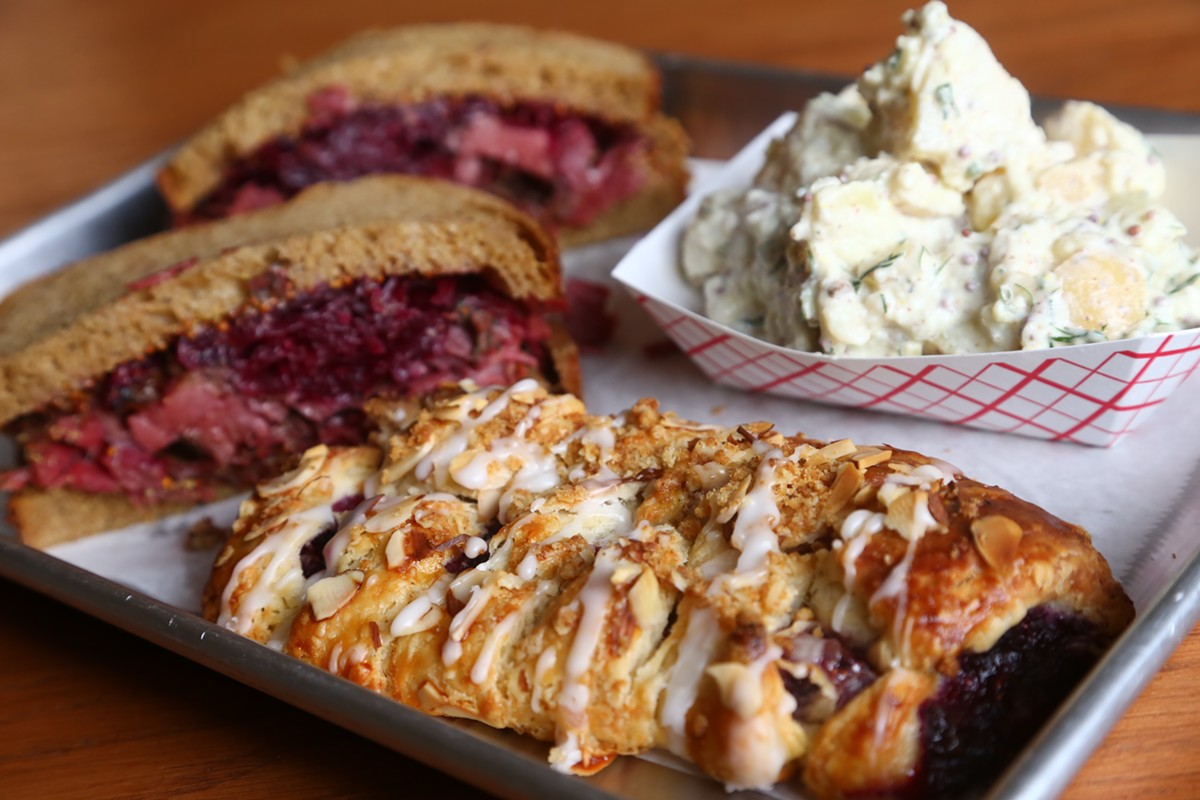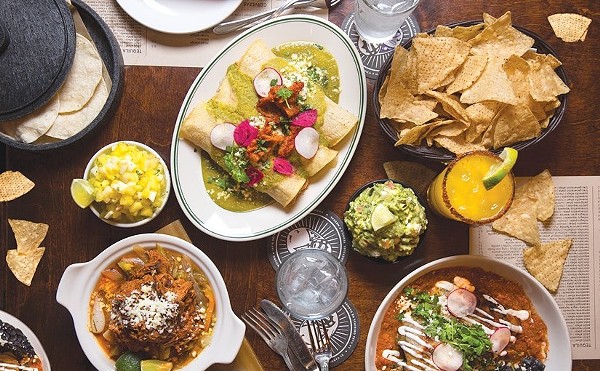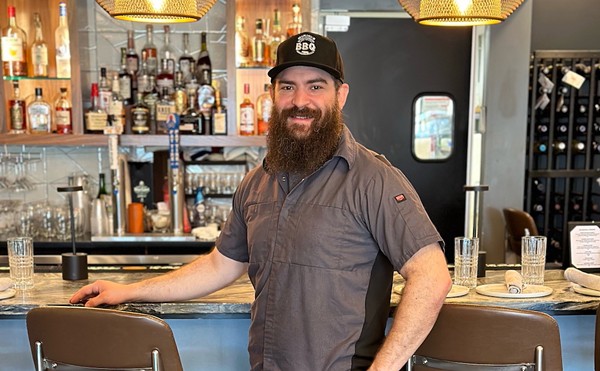Some of my fondest memories as a child revolve around trips to Jack's or Corky & Lenny's, back when I was too short to see over the tops of the coolers. But that was fine with me because all the real action was right there at eye level: plump knishes, glistening smoked fish, pancake-size latkes, corpulent beef tongue, fruit-filled rugalach and snow-covered coconut bars. Few cuisines present such a tantalizing display of prepared foods as the Jewish delicatessen. The root of the word, after all, is delicacy.
Step into Larder in Ohio City and that same sense of delight comes rushing forth. The coolers are chockablock with delectable prepared foods, fresh-baked breads and pastries are stacked high into the air, another fridge is crammed with grab-and-go desserts, and the wall-mounted shelving heaves beneath the weight of so much canned, bagged and jarred pantry provisions. Authentic delis offer immersive — even overwhelming — adventures, and Larder has that in spades.
In the wake of news that the Jewish-American deli was facing extinction, a revival began bubbling up across the nation. Chefs like Larder's Jeremy Umansky, who were weaned on chicken soup and offered a frozen bagel as a teething ring, set about opening new Jewish delis. Most have one foot firmly rooted in respect for the past, while the other is unapologetically lunging into the future. How else does one land at koji-cured pastrami sandwiches?
The traditional method of making pastrami takes seven to 10 days, but by employing koji (a Japanese mold) to cure and tenderize the meat, the chef whittles that time down to a sabbath. Also at work are disciplines like foraging for wild edibles, cold and hot smoking, and fermentation and pickling, all pursuits at which Umansky and the team excel. Despite the weird science taking place behind the scenes, the food would look right at home in an early-20th century tenement.
"If someone were to come in here and eat, most of the food would look, feel, and taste the same as what they're used to seeing at a deli," Umansky asserts.
That pastrami sandwich ($12) features thick-cut but tender meat layered into soft rye with red cabbage sauerkraut and grainy mustard. It isn't a mile-high jaw-breaker, but it's every bit as satisfying and delicious. Still, I'd skip that pastrami in a heartbeat in favor of the fried chicken sandwich ($9). A hot, crisp and chin-drippingly juicy buttermilk-brined thigh is tucked into a soft bun with lettuce, mayo and pickled onions.
The Daily Wurst ($9) might be a bologna and cheese corndog on Tuesday, hot Hungarian sausage on Wednesday, and a fried bologna sandwich on Thursday. Likewise, the Daily Catch ($12) can veer from a house-smoked whitefish salad sandwich or crispy fried smelts to gefilte fish that more closely resembles a fine seafood terrine than a clunky oblong mass. Other "variety meats" that might land on the charcuterie board ($20) include cured venison "ham," headcheese made from lamb neck, tongue and shank, and spicy 'nduja.
Larder's menu is so small that it fits on a modest chalkboard. But it's also deceiving given the amount of items that aren't listed, such as the colorful salads, slaws, pickles and vegetables that fill the coolers. It's also a moving target thanks to the hyper-seasonality of the ingredient list. On recent visits, daily specials ran the gamut from "truly wild" cherry blintzes to acorn spaetzle with foraged mushrooms and kraut. In the cooler was a kaleidoscope of sides that included pickled green beans, wild mushroom and milkweed salad, kosher dill carrots, and sauerruben, a sauerkraut-like slaw made from turnips, to name just a few.
You'll almost always find that pastrami and fried chicken, but the matzo ball soup can be elusive in summer, replaced, perhaps, by chilled asparagus soup, borscht or no soup at all. One day's fortuitous allotment of chicken of the woods mushrooms was transformed into a "pastrami" sandwich ($14) that my vegan pal described as, "super-meaty, but it fell off a tree!"
Larder's secret weapon is Allie LaValle-Umansky, a master baker who happens to be married to the chef. Breads like the braided challah, slightly sour rye, and spent-grain amazake buttermilk bread elevate everything they touch. Sweet and savory pastries like chocolate-swirled babka, dark and chewy chocolate chip cookies, seasonal fruit-filled rugelach, flaky potato knishes and brie-stuffed pretzels will doubtless boost home values in the neighborhood.
On a warm day, when the garage door façade is rolled up and away, the boundary between shop and shtetl melt away, with diners spilling out onto the shared front patio. Visitors to the 1850s-era firehouse would be forgiven for thinking that Larder has been a staple of this near-west community for years, which is the highest praise one can heap upon a new concern.










